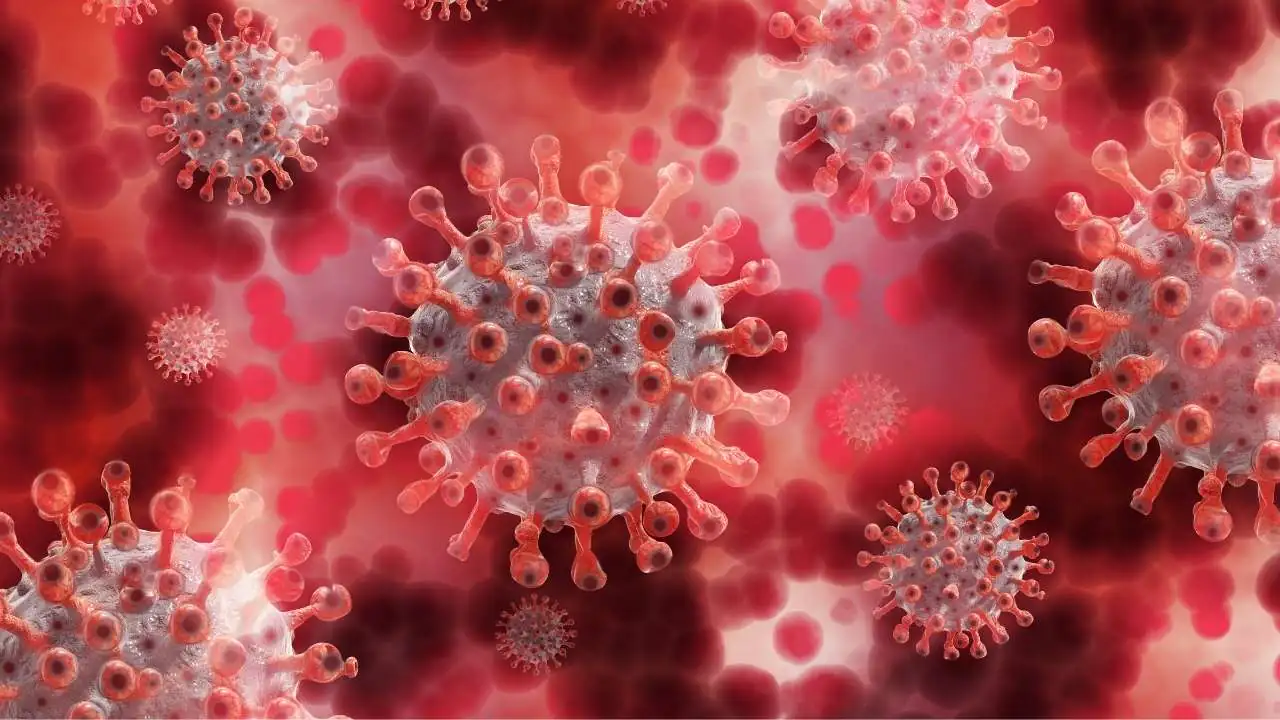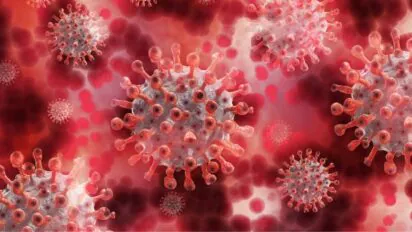All content on this website is for informational purposes only, and is not intended to be a substitute for professional medical advice, diagnosis or treatment. If you have questions about your medical condition or treatment, always seek advice of your physician or other qualified healthcare professional.
What are infectious diseases? 1
Infectious diseases are illnesses caused by harmful organisms (pathogens or germs) that get into your body from the outside. Germs that cause infectious diseases include viruses, bacteria, fungi, parasites and, rarely, prions.
We all get infectious diseases. You can get them from breathing in germs (like after someone coughs or sneezes), from bug bites, from contaminated food and from the environment around you. Respiratory infections (like colds, flu and COVID), stomach flu and even foot fungus are all examples of infectious diseases.
There are hundreds of infectious diseases and their symptoms depend on the type of illness.
Types of infectious diseases include:
Viruses are pieces of genetic information (DNA or RNA) inside a protective shell.
Viral infections can affect different areas and systems of the body, the most common of which being the respiratory system. Some of the most common diseases caused by viruses are colds or influenza (flu), herpes and warts, but others, such as HIV/AIDS, Ebola, and COVID-19 can cause severe illness — antibiotic medicines don’t work.
Did you know? Antiviral medicines unlike most antibiotics, do not kill their target pathogen; instead they prevent its growth.


3-0 million
Cases of severe illness due to seasonal influenza annually 2
Antimicrobial resistance
has been found in all regions of the world
Bacteria are single-celled organisms with their instructions written on a small piece of DNA.
Bacterial infections can affect your skin, brain, blood, and other part of your body. Some of the most common diseases caused by bacteria are strep throat and tuberculosis, but others, such as salmonellosis, pneumonia, or meningitis, can be highly serious.
Did you know? Antibiotics are one of the most significant discoveries in medical history; they save millions of lives. Since penicillin was first discovered in 1928 by Alexander Fleming, antimicrobials have revolutionized our society and economy.


0m
People died from tuberculosis (TB) in 2024, the world’s leading cause of death from a single infectious agent and among the top 10 causes of death. 3
Antibiotics
Are not effective against viruses
Intrinsic or inherent resistance
Some bacteria are naturally resistant to certain antibiotics
Fungi live on your body and in the environment around you. When fungi get overgrown or get into places in your body where they shouldn’t be, they can make you sick.
Fungal infections can affect your skin, hair and nails, but also organs such as the lungs, eyes, liver, and brain. Some of the most common diseases caused by fungi are athlete’s foot and ringworm, but others, such as aspergillosis and histoplasma are more serious.
Did you know? Fungi can develop resistance to antifungal drugs the same way bacteria can develop resistance to antibiotics.


0 days/year
People breathe in or come in contact with fungal spores without getting sick
Resistant fungi
Can spread across countries and continents through people, animals, and goods
Parasites live off the bodies of other organisms.
Parasitic infections can affect your intestine but also your lungs, your cardiovascular system, and even your neurological system. Some of the most common diseases caused by parasites are amoebiasis, ascariasis, and trichuriasis, but others, such as malaria are dangerous.
Did you know? Parasitic infections are one of the world’s major causes of human illness and suffering. Protozans cause a variety of diseases, including Chaga’s disease and malaria which is transmitted through a bite of a female anopheles mosquito.


Prion diseases, also called transmissible spongiform encephalopathies (TSEs), are caused by faulty proteins. Prions are an extremely rare cause of infectious diseases.
How do infectious diseases spread? 1
Different infections spread in different ways, including:
- From person to person when you cough or sneeze
- By sharing utensils or cups with other people
- On surfaces like doorknobs, phones and countertops
- Through bug or animal bites
- From contaminated or improperly prepared food or water
- From working with contaminated soil or sand (like gardening)
- From a pregnant woman to the fetus or newborn
- From blood transfusions, organ/tissue transplants or other medical procedures
How are infectious diseases treated? 1
Treatment depends on the cause of the infection. Sometimes, your healthcare provider will recommend monitoring your symptoms rather than taking medication. Treatments could include:
- Antibiotics for bacterial infections
- Antiviral medications for viral infections (though many can be managed with over-the-counter medications at home)
- Antifungal medications, including lotions and creams, for fungal infections
- Antiparasitic drugs for parasitic infections
- Providers sometimes use surgery to treat fungal or bacterial infections
There are no treatments for prion diseases.
There’s often no single way that’s 100% effective at preventing infectious diseases. But there are many simple habits that can help reduce your risk of an infection. 1
- Getting recommendedvaccinations. Your provider can let you know which are recommended for you. 1
- Practicingsafe food handling. This includes not eating uncooked or unpasteurized foods and beverages, storing and heating foods to safe temperatures, washing or peeling fruits and vegetables, and washing food prep utensils while cooking. 1
- Washing your hands with soap and water. Thorough handwashing is particularly important before preparing a meal or eating, after using the bathroom, after contact with animal and after gardening or working with dirt. 1
- Being courteous to others. Cover your nose and mouth when you sneeze or cough. Avoid being around others when you or they are sick with something contagious. Wear a mask if you must be around others. Don’t share personal items or eating utensils. 1
- Disinfecting frequently touched surfaces and objects. This includes phones, countertops, doorknobs and toys. 1
- Avoid bug bites. Use bug repellent, cover as much exposed skin as you can with clothing, and check for ticks after being in the woods or areas with long grass. 1
- Stay healthy when traveling abroad: Be vigilant when traveling abroad. Know what vaccinations are needed, check health alerts, stick to safe food and drinks, plan in advance in case you get sick and learn about the risks of medical tourism. 4
Antibiotimicrobials save lives, but antimicrobial resistance (AMR), particularly bacterial AMR, has become a crucial global health threat, jeopardising the efficacy of treatment and prevention of infections. 4,5
Antibiotics are a major tool in treating illnesses caused by bacteria, but like any tool, they should be used appropriately. If they are not, the tool may not work when we really need it. 6
Antimicrobial resistance (AMR) occurs when bacteria, viruses, fungi and parasites no longer respond to antimicrobial agents. As a result of drug resistance, antibiotics and other antimicrobial agents become ineffective and infections become difficult or impossible to treat, increasing the risk of disease spread, severe illness and mortality.7
AMR is compromising the effectiveness of life-saving treatments, posing a serious, growing threat to global health and undermining the foundations of modern medicine. Many drug-resistant pathogens are associated with severe clinical outcomes and limited therapeutic options.
The history of AMR dates back to the discovery of penicillin, with the rise of multidrug-resistant pathogens posing significant challenges to healthcare systems worldwide.
In 2023, approximately one in six laboratory-confirmed bacterial infections worldwide were caused by bacteria resistant to antibiotics. Median resistance was most common in urinary tract infections (approximately 1 in 3) and bloodstream infections (1 in 6) and less so in gastrointestinal (1 in 15) and urogenital infections (1 in 125).
Rising AMR is limiting therapeutic choices and driving a shift from oral to intravenous treatments. 8
AMR has the potential to affect people at any stage of life, as well as the healthcare, veterinary and agriculture industries.4
The economic impact of AMR is substantial, with projected losses in the trillions of dollars and significant financial burdens on healthcare systems and agriculture. 8
Globalisation, human mobility, tourism, and climate change can influence the dissemination of AMR. For example, the COVID-19 pandemic intensified antibiotic usage and accelerated the development of pathogen resistance. 8
Therefore, new antibacterials that act through novel modes of action are urgently needed. 5
Meanwhile, the antibiotic development pipeline remains weak and is unlikely to deliver effective alternatives in the near future for several of the most pressing threats. 8
AMR is a critical global health issue driven by antibiotic misuse and overuse in various sectors, leading to the emergence of resistant microorganisms. 6
Take antibiotics exactly as prescribed. If antibiotics are the best treatment when you are sick: 9
- Take them exactly as prescribed by your healthcare provider.9
- Do not share your antibiotics with others.9
- Do not save them for later. Taking the wrong medicine for a future illness may delay correct treatment and can cause severe side effects.9
- Do not take antibiotics prescribed for someone else. This may delay the best treatment for you, make you even sicker or cause side effects.9
- Talk with your healthcare provider about the best treatment when you or your family are sick.4
- Talk with your veterinarian about the best treatment option when your animal is sick. 4
Join us on Facebook and let’s talk antimicrobial, especially during the World Antimicrobial Awareness Week (WAAW) from 18 to 24 November every year.
References